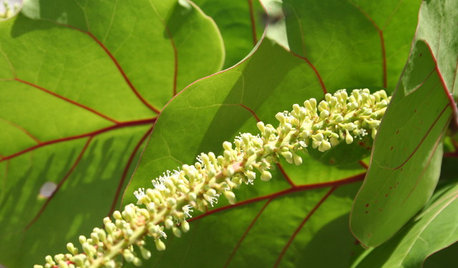Anyone use epsom salt as fertilizer for houseplants?
grice
16 years ago
Featured Answer
Sort by:Oldest
Comments (20)
meyermike_1micha
16 years agoRelated Professionals
Benbrook Landscape Architects & Landscape Designers · Erie Landscape Architects & Landscape Designers · Summit Landscape Architects & Landscape Designers · Peabody Landscape Contractors · Springfield Landscape Contractors · Wakefield Landscape Contractors · Annandale Landscape Contractors · Byram Landscape Contractors · Englewood Landscape Contractors · Gainesville Landscape Contractors · Parkland Landscape Contractors · Watertown Landscape Contractors · Greenfield Landscape Contractors · Ogden Interior Designers & Decorators · Whitman Interior Designers & Decoratorsgrice
16 years agotapla (mid-Michigan, USDA z5b-6a)
16 years agomeyermike_1micha
16 years agoalbert_135 39.17°N 119.76°W 4695ft.
16 years agopirate_girl
16 years agotapla (mid-Michigan, USDA z5b-6a)
16 years agomeyermike_1micha
16 years agogrice
16 years agotapla (mid-Michigan, USDA z5b-6a)
16 years agobirdsnblooms
16 years agoronalawn82
16 years agopirate_girl
16 years agotapla (mid-Michigan, USDA z5b-6a)
16 years agogrice
16 years agoMonita Johnson
8 years agoMonita Johnson
8 years agoMonita Johnson
8 years agotapla (mid-Michigan, USDA z5b-6a)
8 years ago
Related Stories

MOST POPULARThe Perfect Houseplant for People Who Kill Houseplants
If you can fill a jar with water, you can keep golden pothos vine happy — and it will pay you back with cleaner air and a greener home
Full Story
CONTAINER GARDENSHappy Houseplants, Happy People
Potted plants add life and beauty to a room. Learn easy ways to keep them healthy
Full Story
GARDENING GUIDESCommon Myths That May Be Hurting Your Garden
Discover the truth about fertilizer, soil, staking and more to keep your plants healthy and happy
Full Story
HOUSEPLANTS8 Essentials for Healthy Indoor Plants
Houseplants add so much to our homes — and can thrive when grown in the right conditions. Keep these tips in mind
Full Story
HOUSEPLANTSHow to Grow Orchids Indoors
Orchids are the exotic aristocrats of the flower world and can make themselves comfortable in almost any home
Full Story
HOUSEPLANTSPlay Up Some Fiddleleaf Figs for a Lively Indoor Tune
Strike a dramatic chord in a minimalist scene or a country note in a rustic setting — fiddleleaf fig plants harmonize with any style
Full Story
GARDENING GUIDESGreat Design Plant: Sea Grape, a Hardy Coastal Delight
Up to the high-tide line or even indoors, sea grape draws smiles for its looks and cheers for its tenacity
Full Story
FARM YOUR YARDHow to Get Good Soil for Your Edible Garden
The nutrients in your soil feed the plants that feed you. Here are tips on getting it right — just in time for planting season
Full Story
GARDENING GUIDESLearn the Secret to Bigger and Better Roses
Grow beautiful roses using both ordinary and unusual soil amendments
Full Story
GARDENING GUIDESHouzz Call: What’s Your Favorite Backyard Beauty?
The simple, honest daisy is this writer’s go-to garden flower. We want to hear which plant, flowering or otherwise, gives you special joy
Full StoryMore Discussions











birdsnblooms